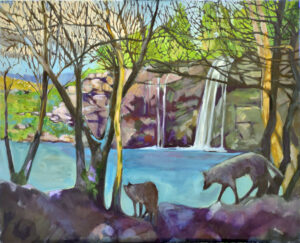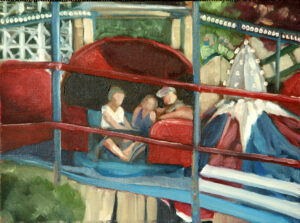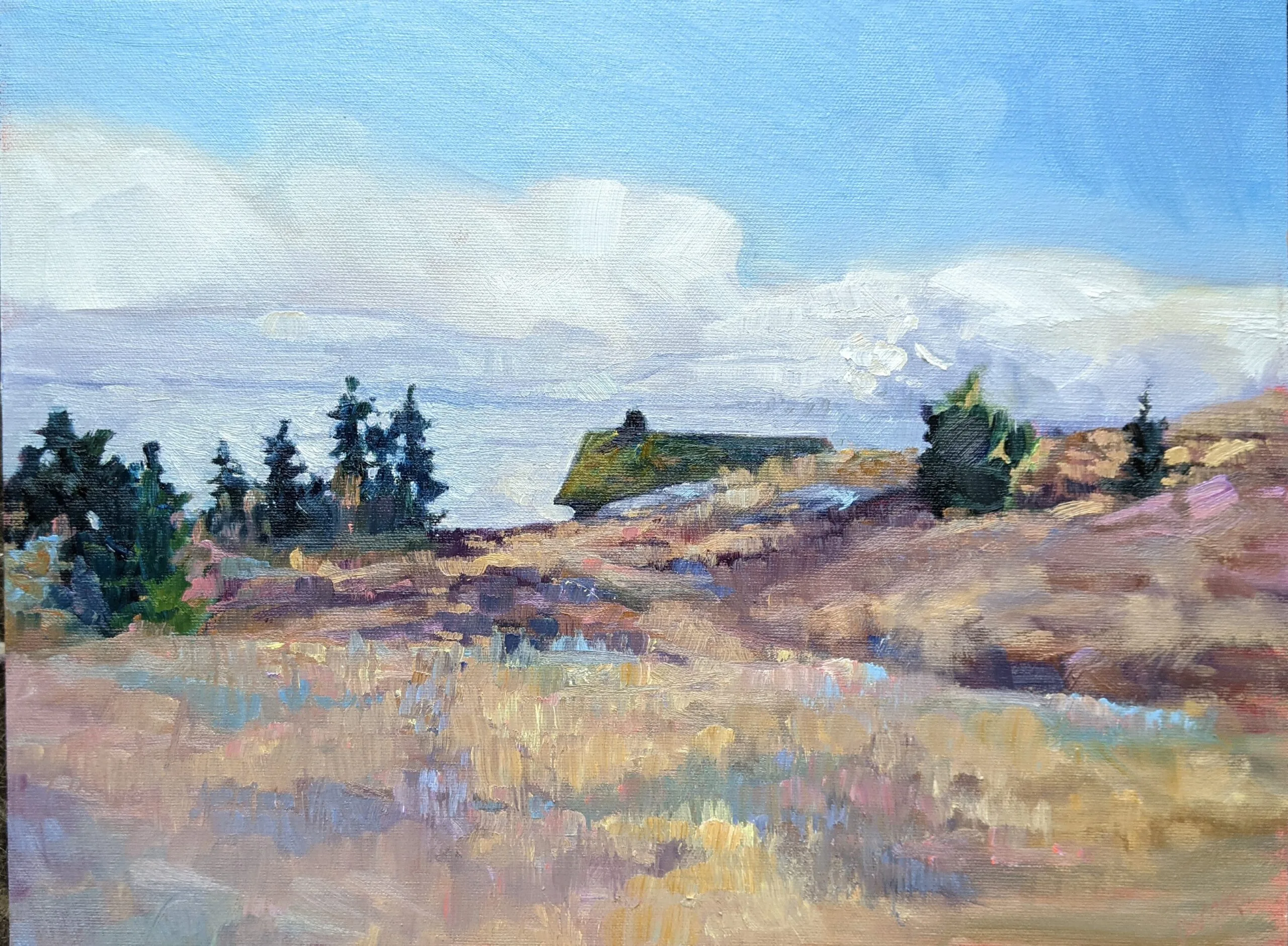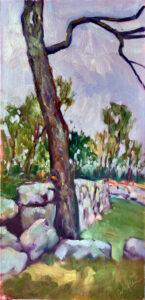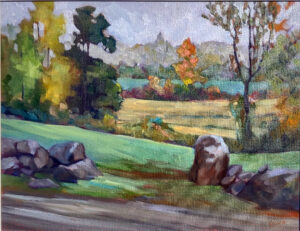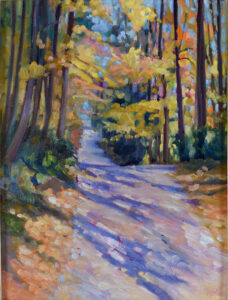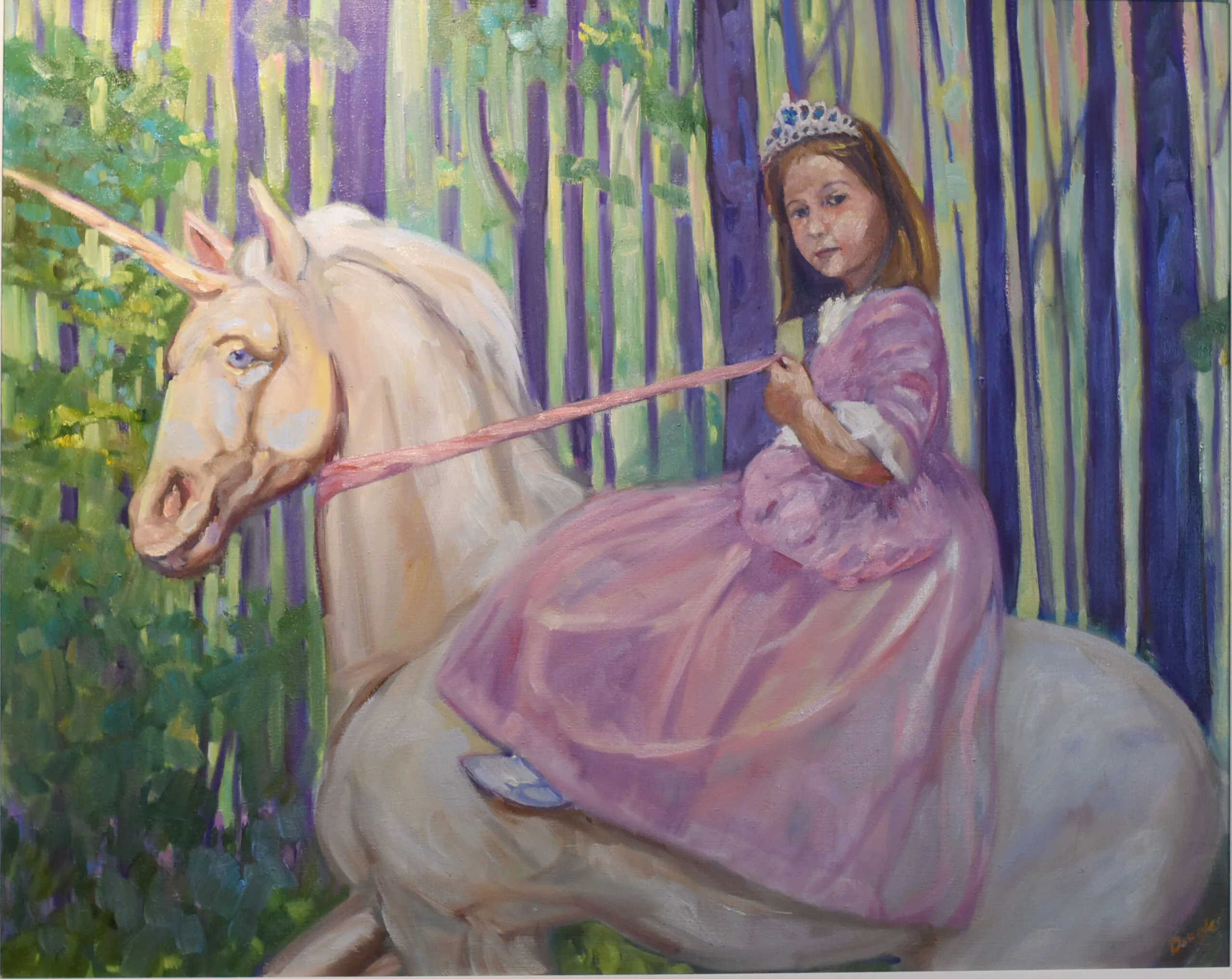
In response to Monday’s blog post about drawing, Byron Carr mused, “talent is when desire and determination collide.” I liked that comment and reposted it on my Facebook wall. That drew out the predictable argument that talent is innate. This was my second tangle with the idea and it was only Tuesday.
Byron Carr should know something about talent, as he has it in spades. I think I can legitimately claim to know something about teaching art. In fact, I seldom hear professional artists banging on about talent. We talk mostly about hard work.
There is a strong streak in the human psyche that likes to believe that your destiny is written before your birth. The Greeks had the Moirai, spinning their fates; the Romans had the Parcae; the Norse had the Norns. In Christianity, that comes down to us as predestination. That’s a riff on the philosophical idea of determinism, where everything that happens has already been ordained by prior events.
Scratch away our religious underpinnings, as we’re doing today, and suddenly everything is genetic: you’re a foul-mouthed, lazy b@#$d because it’s in your genes.
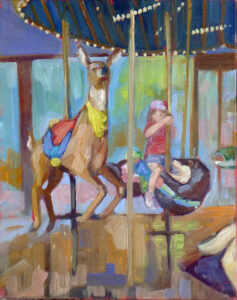
It’s all so tiresome. Even if you don’t believe in free will (as I emphatically do), determinism doesn’t leave room for the impoverished, uneducated child to grow up to be Charles Dickens, or the abused, neglected child to grow up to be Eminem.
Why do people say this stuff?
The ‘innate talent’ argument has three endpoints, none of which are particularly nice. The first is exclusionary. You can’t be an artist because your stars didn’t align right. The second is a justification for not doing something in the first place: “I’d love to, but I’m not talented.” The third denigrates the value of the work, because it denies the effort and time that went into it.
“It’s astonishing how someone who knows another person well, and believes that person is ‘talented,’ must have been asleep while that person was putting in their 10,000 hours toward mastery,” Bobbi Heath mused.
In my own case, those 10,000 hours go back to my childhood. I was a terrible student. My sister and brother died in two separate, horrific accidents when I was 9 and 14. John’s was not just a family trauma but a public one; his driver ed car was hit by a drunk driver and two of his classmates and another young person also died with him. I was traumatized by these events, but nobody talked about grief counseling or post-traumatic stress back then.
I couldn’t focus, couldn’t sit still. I could, however, be calmed with a pencil in my hand, so my teachers generally turned a blind eye to my doodling, as long as I was quiet. I drew through all my classes, drew at home. It wasn’t a response to innate talent; it was a coping mechanism. But before long, I was drawing better than my peers. From that time forward, I was called ‘talented.’
My younger brothers, equally stressed and with the same innate intellect, chose different ways to cope. My brother Robert, for example, obsessively took things apart and put them back together again. Today he can build or rebuild anything.
Conversely, I was told as a youth that I had ‘no talent’ for mathematics. When I finally rejected that, I went on to take math up to multivariable calculus.
You don’t have to be the best at something to derive great satisfaction from doing it. Are there innate differences between ‘talented’ athlete Josh Allen and me? Of course, starting with age and sex. That doesn’t, however, stop me from pursuing my own athletic pursuits, which have managed to keep this 64-year-old body in good running order.
“Our lives are the sum of all the choices we make, the bridges we cross, and the ones we burn… Fate, luck, and providence are the consequence of our freedom of choice, not the determinants,” wrote Judith Land, and I couldn’t agree more.
Reserve your spot now for a workshop in 2025:
- Advanced Plein Air Painting, Rockport, ME, July 7-11, 2025.
- Sea and Sky at Acadia National Park, August 3-8, 2025.
- Find Your Authentic Voice in Plein Air, Berkshires, MA, August 11-15, 2025.
- Immersive In-Person Fall Workshop, Rockport, ME, October 6-10, 2025.

